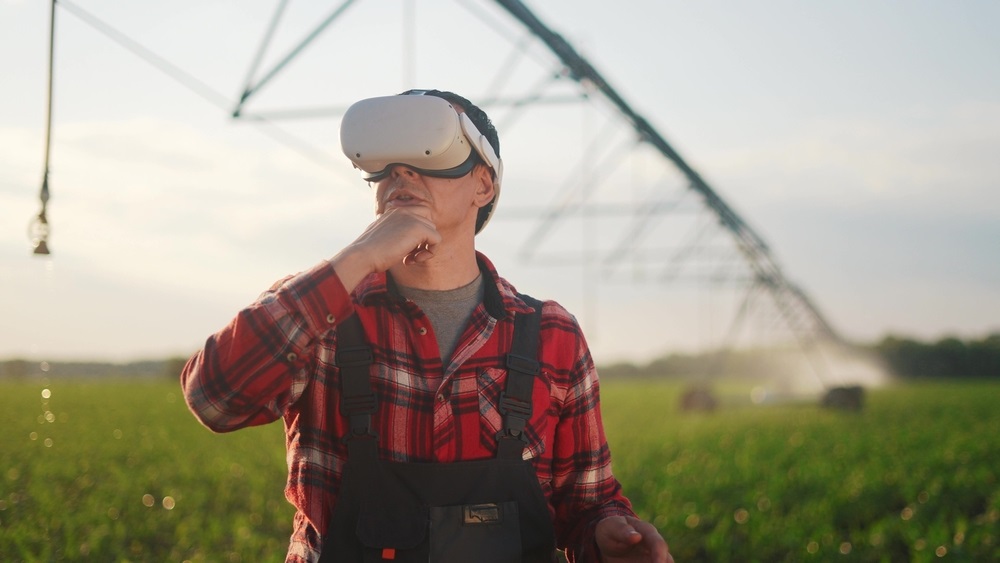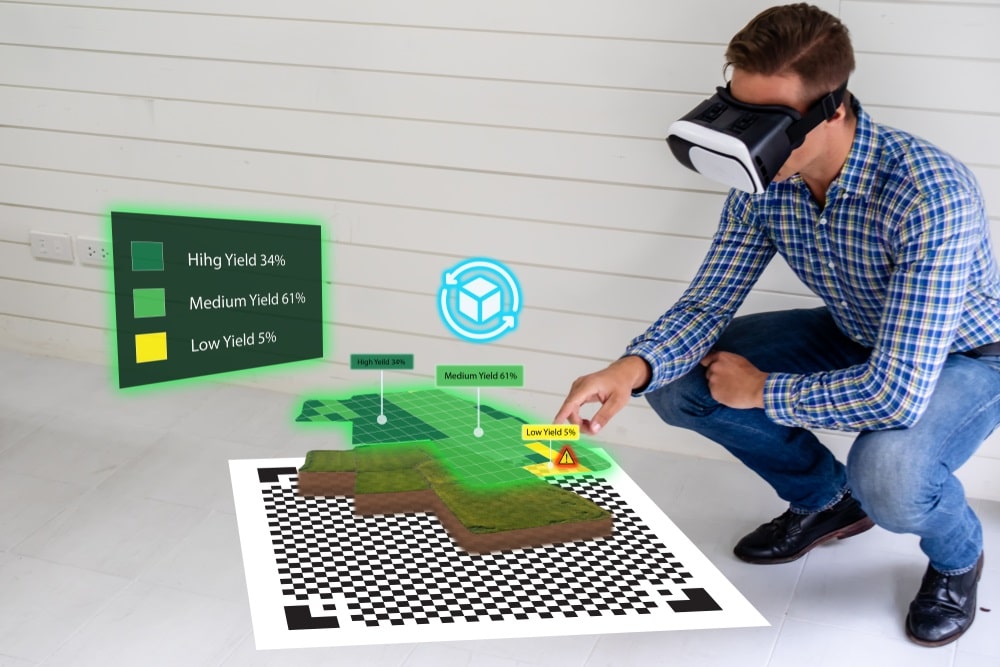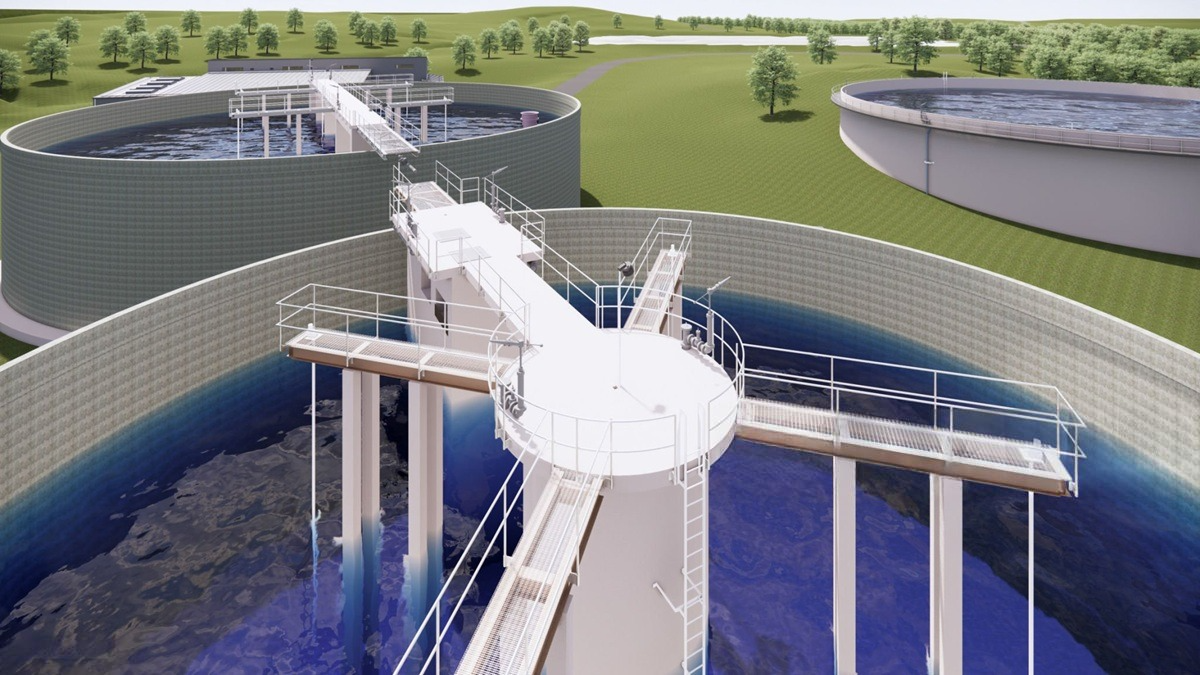Virtual Reality for Agricultural Engineering Education

In a world where sustainable farming practices are increasingly vital for both our environment and food security, agricultural engineering stands at the forefront of this revolution.
This complex field, rich with innovation and strategies to optimize farming, often poses challenges when it comes to effective education. Because of this, one question persists, i.e., how can educators bridge the gap between theoretical knowledge and practical experience?
Well, the answer is Virtual Reality (VR).
VR technologies are shaping the future of agricultural engineering education. By leveraging these tools, we are not just educating, we are immersing students in the very fabric of farming, preparing them for the challenges of tomorrow.
In this blog, we will explore the aspects of VR in agricultural engineering, its applications, challenges to overcome, and the future ahead.
So, let’s begin.
Understanding Agricultural Engineering
Agricultural engineering, at its core, addresses the technological facets of farming.
From optimizing machinery to enhancing irrigation methodologies, this field is instrumental in redefining sustainable and efficient farming.
The depth and breadth of agricultural engineering encompass soil science, biotechnology applications, and even the design and optimization of farm structures.
As the world's population grows and climate change poses unforeseen challenges, the importance of this discipline in ensuring food security cannot be overstated.
However, traditional educational methods often struggle to encapsulate the dynamic nature of the field.
Textbooks and classroom lectures, while informative, might not be sufficient to impart the hands-on experience required to tackle real-world agricultural challenges.
So, how does one ensure optimum agricultural education in such a complex discipline?
The answer lies in immersive technological tools.
Through tools like virtual reality in agricultural engineering and augmented reality applications, students can gain firsthand experience and insights without stepping onto a physical field or operating actual machinery.
This fusion of agricultural engineering education with cutting-edge technology prepares students not just theoretically, but also practically.
Why VR for Agricultural Engineering Education?

The dynamic landscape of agricultural engineering demands a teaching approach that's both innovative and experiential.
Immersive engineering through VR is more than just visual immersion, it's a transformative learning experience.
Traditional learning methodologies, which primarily rely on two-dimensional representations and theoretical discussions, often fall short of conveying the multi-dimensional intricacies of agricultural practices.
The tactile, auditory, and visual immersion offered by VR provides the much-needed hands-on experience vital for comprehending complex agricultural concepts.
With virtual reality for agricultural education, students are not just passive recipients of knowledge but active participants, navigating real-world challenges from their classrooms.
However, the brilliance of how VR is used in agriculture isn't confined to mere virtual tours of farms or simulations of machinery operations.
It serves as an all-encompassing educational tool, giving students the liberty to analyze soil properties, assess crop health, and even design irrigation systems.
The world of virtual reality is forgiving.
It allows students to experiment, err, and reiterate their strategies, all in a risk-free environment.
Such a holistic approach is particularly beneficial for nuanced subjects like agricultural engineering where mistakes in the real world can have significant repercussions.
But the application of immersive technology in agricultural engineering education isn't just limited to VR. The introduction of AR/VR to train engineering students adds another layer of depth.
By superimposing virtual data onto the real world, students gain a more enriched understanding of agricultural processes.
For instance, while VR might let a student operate a virtual tractor, AR can overlay crucial information about the tractor's components when viewing a real one.
This harmonious blend of theoretical knowledge and practical application ensures that students are well-prepared to tackle the challenges of modern agricultural engineering head-on.
Types of VR Experiences in Agricultural Engineering
_13444.jpg)
The world of virtual reality in agricultural engineering is vast, offering myriad experiences that delve deep into the multifaceted aspects of farming and farm machinery.
The blend of visual, auditory, and tactile feedback transforms these experiences from mere simulations to holistic immersive learning platforms.
✔️ Virtual Machinery Operations
VR grants students the unprecedented opportunity to operate heavy machinery. This not only provides insights akin to VR in mechanical engineering but also ensures a comprehensive understanding of machinery functionality and safety protocols.
In a controlled virtual environment, students can familiarize themselves with the nuances of tractors, combines, and more, gaining expertise without the risks associated with real-world operation.
✔️ Soil and Crop Analysis
One of the pillars of agricultural engineering is understanding the very foundation of farming, i.e., the soil. VR simulations can present microscopic views of soil profiles, allowing students to analyze soil composition, nutrient content, and moisture levels.
Similarly, virtual crop fields can be scanned to detect pests, diseases, and growth patterns, enabling students to make informed decisions in crop management.
✔️ Irrigation and Water Management
Proper water management is pivotal for successful farming.
Through VR, students can design, simulate, and test intricate irrigation systems, learning the best practices for efficient water use.
Such experiences teach the importance of water conservation while optimizing crop yield.
✔️ Farm Infrastructure Planning
Farming isn't just about fields and crops. It encompasses storage facilities, processing units, and transport logistics.
VR can aid students in designing and visualizing entire farm infrastructures, from greenhouses to storage silos, ensuring seamless integration and operational efficiency.
✔️ Mixed Reality in Farming
While VR immerses users in a fully virtual environment, MR in agricultural engineering education offers something more holistic.
Mixed Reality overlays virtual data onto actual, tangible surroundings.
Now, imagine students standing in a real field, donning MR glasses, and receiving real-time data on soil health, or viewing virtual blueprints overlaid on a real construction site for a new barn.
The possibilities are boundless, bridging the virtual and real worlds seamlessly.
Transform agricultural engineering education with immersive virtual reality solutions—innovate learning, enhance skills, and shape the future of farming.
Benefits in the Classroom and Agricultural Field
Virtual reality in agricultural engineering offers tangible benefits in both classroom settings and on-field training. Here are some of the advantages educators and students alike are discovering:
✔️ Tailored Learning Experiences
One size does not fit all, especially when it comes to education. Different students have different learning paces and styles. VR facilitates a flexible learning environment.
By customizing VR modules, educators can provide learning experiences that cater specifically to individual needs.
With VR engineering, a student struggling with a particular concept can repeat a module until they grasp it, while advanced learners can delve into more complex simulations without waiting.
✔️ Reduced Costs
Traditional agricultural education often requires significant investments in physical resources, machinery for demonstrations, or even trips to actual fields or factories.
VR drastically minimizes these costs.
A single VR setup can simulate a myriad of scenarios, from operating heavy machinery to intricate soil analysis, eliminating the need for expensive equipment or logistical preparations for field visits.
✔️ Collaborative Learning
Gone are the days when learning was a solitary activity. With VR, students can engage in collaborative projects within a virtual space.
They can team up to tackle challenges, brainstorm solutions, and implement strategies, all while being in a virtual setting.
This not only promotes teamwork but also hones problem-solving skills in real-time scenarios.
Challenges and Considerations
While the integration of VR in agricultural engineering education holds immense promise, it's essential to be cognizant of the challenges and considerations:
✔️ Cost and Accessibility
Even though VR can lead to long-term savings, the initial investment can be significant. Acquiring VR setups, especially for larger cohorts, might be a financial strain for some institutions.
Additionally, ensuring that all students have equal access to these tools, both in terms of hardware and content, is crucial.
✔️ Learning Curve
Like all technologies, VR comes with its learning curve. Educators need to be adept at navigating and utilizing VR tools to ensure effective teaching.
This might require training sessions, workshops, or even hiring specialists. It is a major consideration that institutions must account for.
✔️ Health and Comfort
Though VR offers experiential learning in colleges, its extended exposure can lead to health concerns.
Some students might experience motion sickness, eye strain, or discomfort during prolonged VR sessions.
Educators must be aware of these potential issues and ensure that breaks are incorporated, and alternative learning methods are available for those who find it challenging to adapt to VR.
The Future of VR in Agricultural Engineering Education
Virtual Reality (VR) has already made significant inroads into various educational sectors, and its trajectory in agricultural engineering education appears boundless.
Let's delve into what the future might hold for VR in this essential discipline:
✔️ Holistic Farm Management Systems
The future might see the development of entire virtual farms, functioning dynamically based on real-world data.
Students can be tasked with managing these virtual farms, from crop selection and machinery operation to resource management and logistics.
This would provide an unparalleled, comprehensive understanding of modern agricultural engineering practices.
✔️ Integration with AI and Big Data
As AI progresses, it's likely that VR systems in agricultural education will become smarter. Imagine a VR module that adjusts its challenges in real-time based on a student's performance, or one that integrates vast amounts of real-world data to simulate accurate future scenarios, from climate change impacts to market demands.
✔️ Immersive Research Opportunities
VR could offer students and researchers a platform to test new agricultural technologies, techniques, and strategies in a virtual environment before they are rolled out in the real world.
This ensures that new advancements are effective, efficient, and sustainable.
✔️ Specialized Modules for Niche Sectors
As the field of agricultural engineering broadens, there will be a need for niche educational modules.
Whether it's sustainable organic farming, urban agriculture, or precision farming, VR can cater to these specialized sectors, offering students tailored experiences.
✔️ Integration of AR and MR
While VR offers immersive virtual environments, the future will likely see a rise in Augmented Reality (AR) and Mixed Reality (MR) in agricultural engineering education.
These technologies can overlay virtual data onto real-world scenarios, offering students an enriched, layered learning experience.
✔️ Sustainability and Environmental Education
As the world grapples with environmental challenges, the role of agricultural engineers in fostering sustainability becomes paramount.
VR can simulate the repercussions of various agricultural practices on the environment, driving home the importance of sustainable farming.
Conclusion
The age-old practice of farming is undergoing a technological renaissance, led by agricultural engineering.
As we stand at this pivotal juncture, the tools we use to impart knowledge become as crucial as the knowledge itself.
VR, AR, and MR are more than just trending concepts. These immersive technologies represent a transformative shift in agricultural education.
As educators, students, and innovators, it is our collective responsibility to embrace these tools, understanding that they offer more than just simulated experiences.
They hold the promise of a brighter, more sustainable future for agriculture.
As we delve into the intricacies of soil, crops, and machinery through VR, we are not just learning, we are pioneering the future of farming.
At iXR Labs, we're deeply committed to harnessing the transformative power of Virtual Reality.
Recognizing its vast impact on higher education, we craft state-of-the-art VR simulations tailored for medical, engineering, and science institutions.
For those intrigued by the prospect of weaving VR into your academic programs, explore more at www.ixrlabs.com

.png)
.png)


.png)